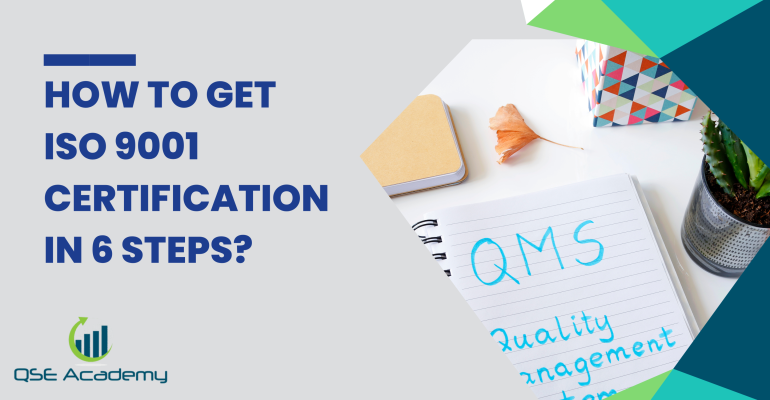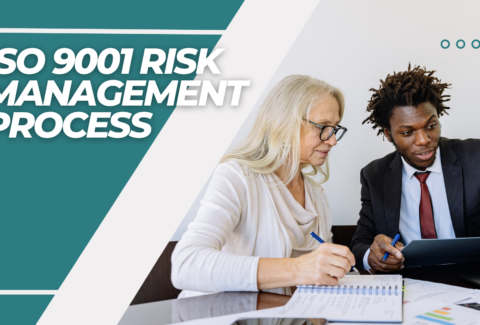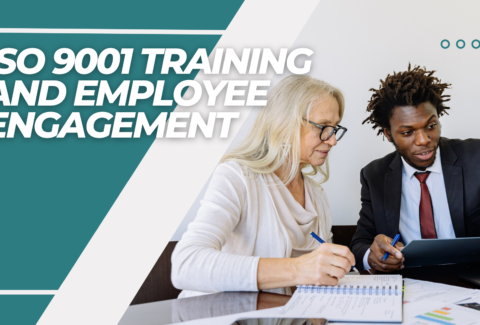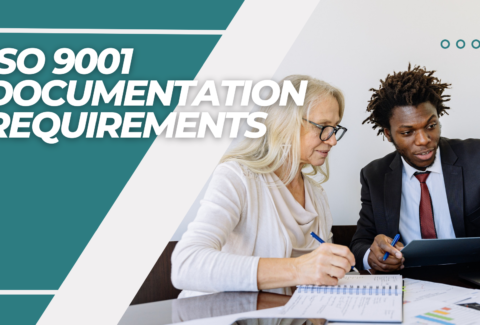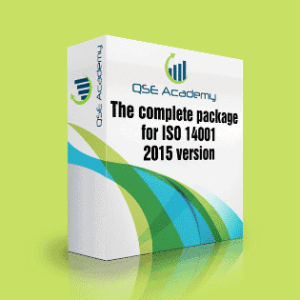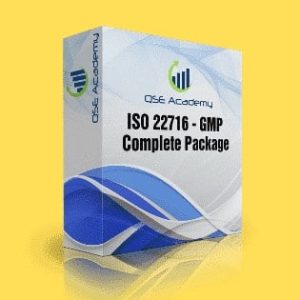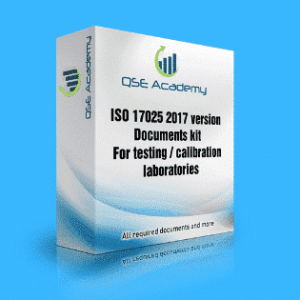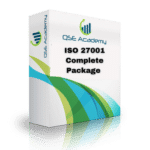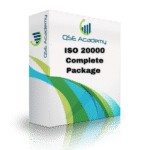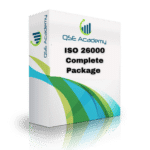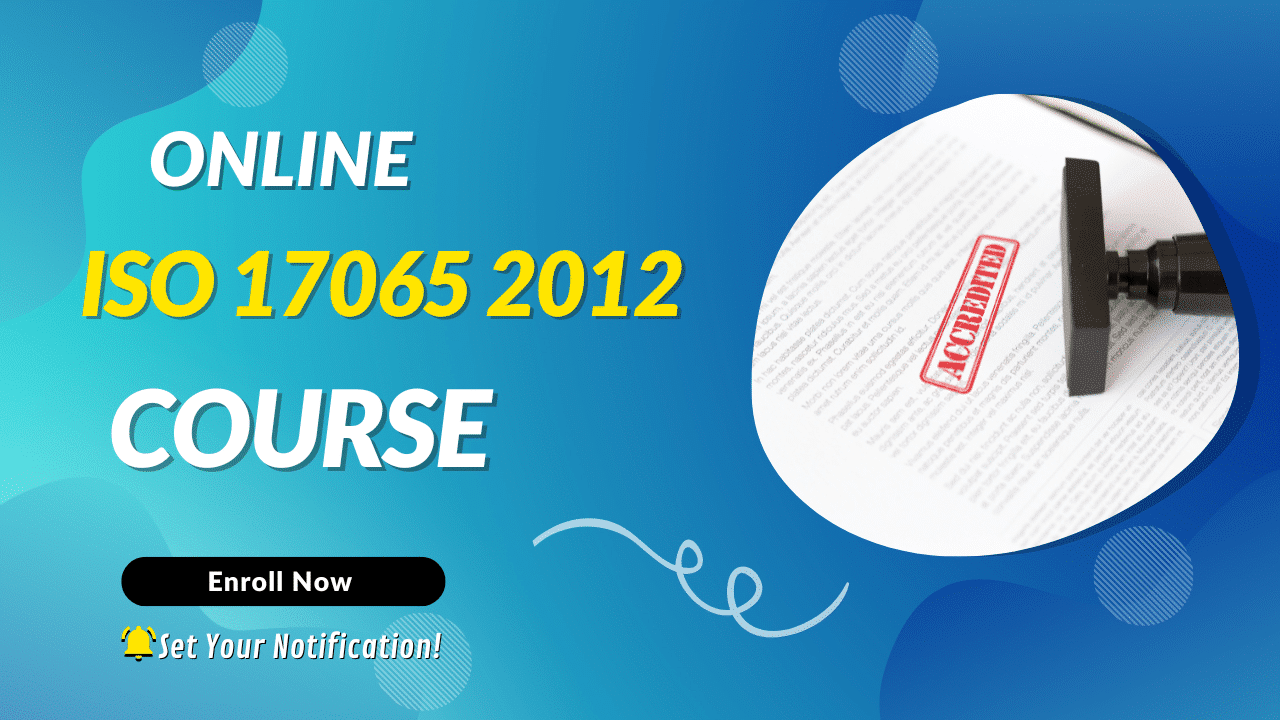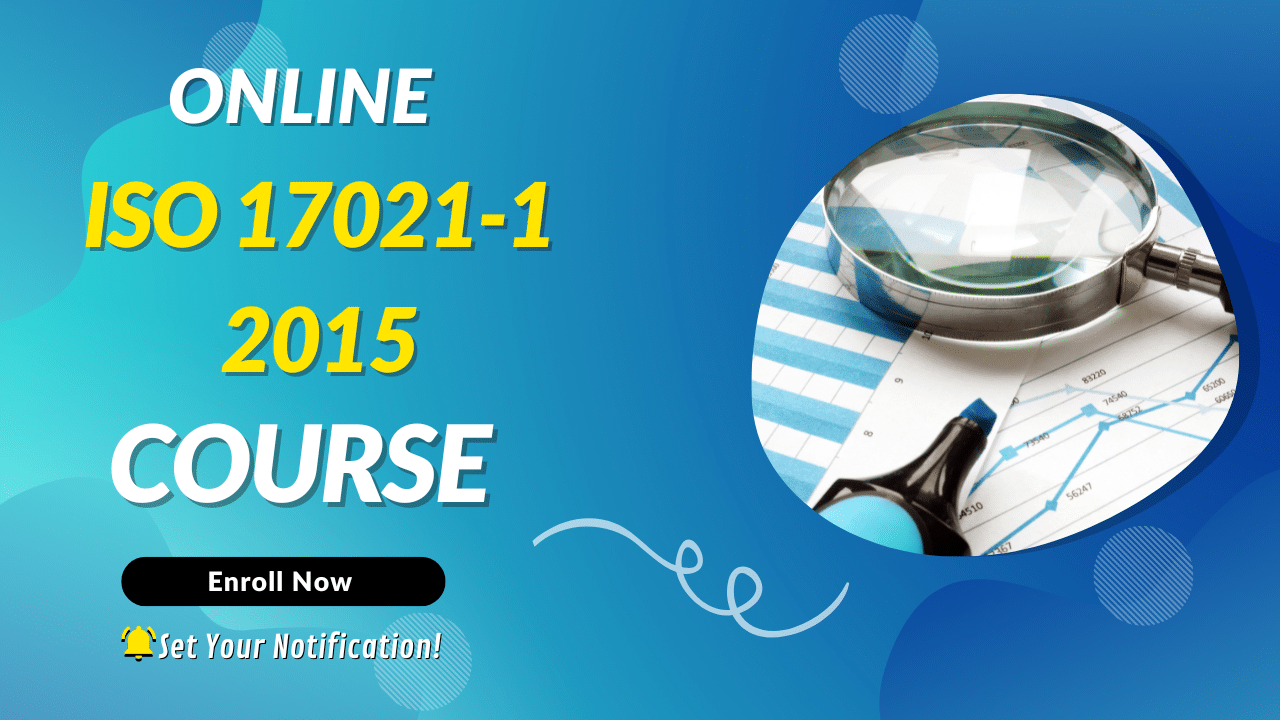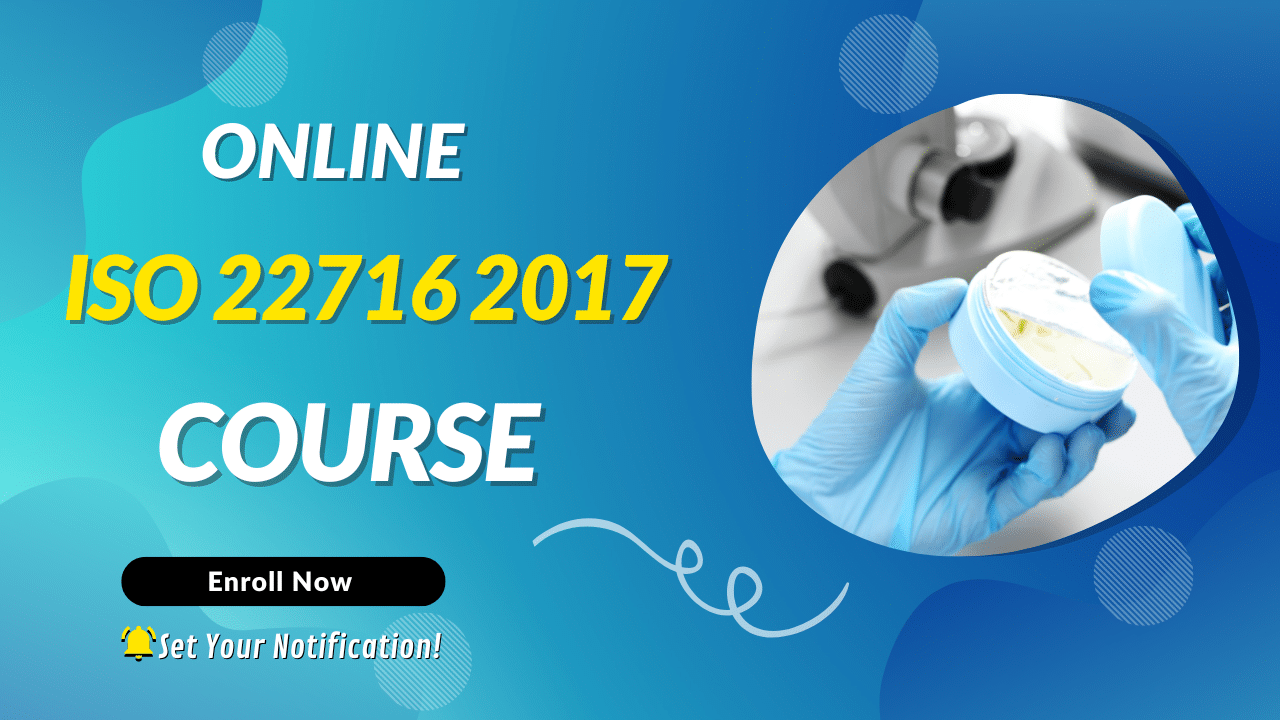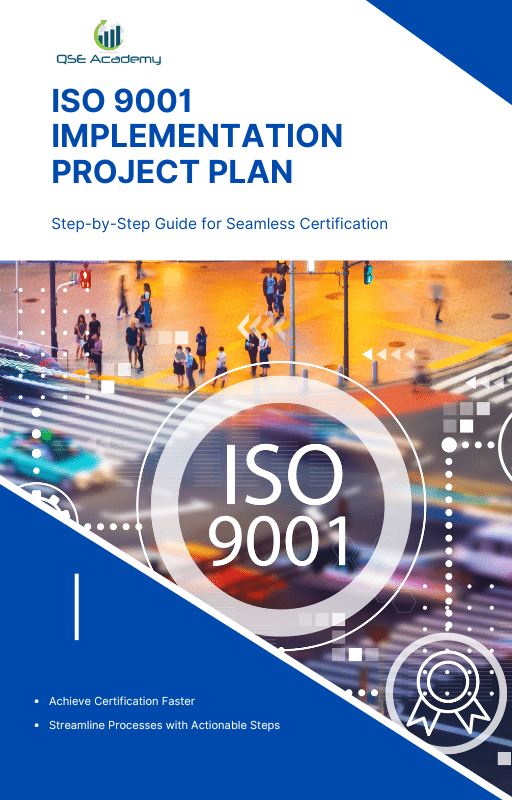How to get ISO 9001 Certification in 6 Steps?
How to get ISO 9001 Certification in 6 Steps?
So, you’ve heard about ISO 9001 certification, and now you’re wondering: How do I actually get it? Maybe you’re looking to boost your company’s credibility, streamline processes, or even win new clients who require it. Whatever your reason, you’re in the right place!
Getting ISO 9001 certification might sound like a complicated process filled with paperwork and audits—but don’t worry, it’s totally manageable when broken down into clear steps. Think of it like learning a new recipe: you just need the right ingredients (your quality management system), a good set of instructions (the ISO 9001 standard), and a little bit of practice to get it just right.
In this guide, I’ll walk you through the six essential steps to help you successfully get ISO 9001 certification. We’ll cover everything from understanding the standard to passing the final audit—all in a way that makes sense, without drowning in technical jargon.
By the time you finish reading, you’ll have a clear roadmap to follow. Ready to get started? Let’s dive into the six steps to get ISO 9001 certification and set your business up for long-term success!
Step 1: Understand the ISO 9001 Standard
Before you can get ISO 9001 certification, the first step is to understand exactly what it is and why it matters. Think of it like learning the rules of a game before you start playing—you wouldn’t jump into a board game without reading the instructions first, right? The same goes for ISO 9001 certification.
At its core, ISO 9001 is an international standard for quality management systems (QMS). It’s all about helping businesses create efficient, customer-focused processes that lead to consistent, high-quality products and services. The standard is designed to work for businesses of all sizes and industries—whether you run a small local business or a multinational company.
What Does ISO 9001 Cover?
The ISO 9001 standard is built around key principles like customer satisfaction, process efficiency, risk management, and continuous improvement. It requires businesses to:
✅ Define clear quality objectives and policies
✅ Standardize processes to ensure consistency
✅ Monitor performance and make data-driven improvements
✅ Focus on customer needs and expectations
One important thing to note is that ISO 9001:2015 is the latest version of the standard. So, when working toward getting ISO 9001 certification, make sure you’re following the most up-to-date requirements.
Why Understanding ISO 9001 Matters
Imagine trying to build a house without a blueprint—it would be chaotic, right? The same applies to ISO 9001 certification. Understanding the standard ensures that you’re setting up a strong foundation for success.
By fully grasping the requirements, you’ll:
✔ Avoid common mistakes during the certification process
✔ Save time and resources by focusing on what really matters
✔ Confidently implement a quality management system that works for your business
So, before you dive into documentation or audits, take the time to understand the ISO 9001 standard. Read through the official guidelines, attend a training session, or even work with an ISO consultant if needed. The better you understand it, the smoother your journey to get ISO 9001 certification will be!
Now that you’ve got the basics down, let’s move on to the next step—conducting a gap analysis to see where your business currently stands.
Step 2: Conduct a Gap Analysis
Now that you have a solid understanding of the ISO 9001 standard, the next step to get ISO 9001 certification is figuring out where your business stands right now. This is where a gap analysis comes in—it’s like taking a snapshot of your current processes and comparing them to ISO 9001 requirements.
Think of it this way: if you were training for a marathon, you’d probably start by assessing your current fitness level. Are you already running regularly, or do you need to start from scratch? A gap analysis does the same thing for your quality management system—it helps you see what’s already in place and what needs improvement before moving forward.
What is a Gap Analysis?
A gap analysis is simply a review of your existing processes, policies, and documentation to see how they measure up against ISO 9001 requirements. It helps identify the “gaps”—the areas that need to be improved or added before you can successfully get ISO 9001 certification.
How to Conduct a Gap Analysis
Here’s how you can perform a gap analysis step by step:
✅ Step 1: Compare Your Current System to ISO 9001 Requirements
- Review the ISO 9001 standard and list its key requirements.
- Gather your existing processes, policies, and quality procedures.
- Identify what’s missing or doesn’t fully align with the standard.
✅ Step 2: Talk to Your Team
Your employees work with these processes every day, so they’re a great source of insight. Ask them:
- How do we handle quality control?
- Are our processes consistent and well-documented?
- Do we track customer satisfaction effectively?
- Where do we see inefficiencies or recurring issues?
✅ Step 3: Document the Gaps
Once you’ve assessed everything, document the areas that need improvement. Common gaps include:
❌ Lack of documented procedures
❌ Inconsistent record-keeping and tracking
❌ No structured approach to customer feedback
❌ Weak risk management strategies
By identifying these gaps early, you’ll have a clear action plan for moving forward. This step is crucial because it prevents last-minute surprises when you’re further along in the process to get ISO 9001 certification.
Why This Step Matters
Skipping a gap analysis is like going on a road trip without checking your fuel levels—you might make it, but you’re more likely to run into problems along the way. Taking the time to analyze your current system makes the rest of your ISO 9001 journey much smoother.
Once you know what needs fixing, you can move on to developing and implementing your Quality Management System (QMS)—which is exactly what we’ll tackle in the next step!
Step 3: Develop and Implement a Quality Management System (QMS)
Alright, now that you’ve completed your gap analysis, it’s time to roll up your sleeves and start building a solid Quality Management System (QMS). This is the core of your journey to get ISO 9001 certification—without it, certification simply isn’t possible.
Think of your QMS as the backbone of your business operations. It’s a structured way of ensuring that everything runs smoothly, efficiently, and consistently, all while meeting ISO 9001 standards. If done right, it won’t just help you get ISO 9001 certification, but it’ll also make your business more productive and customer-focused.
What is a Quality Management System (QMS)?
A QMS is a set of policies, procedures, and documented processes that define how your company ensures quality control, customer satisfaction, and continuous improvement. The goal is to create a system that not only meets ISO 9001 requirements but also makes your business more efficient and effective.
Key Components of a QMS
To successfully get ISO 9001 certification, your QMS should include:
✅ A Clear Quality Policy – A formal statement that outlines your company’s commitment to quality. It should be simple, clear, and aligned with ISO 9001 principles.
✅ Defined Quality Objectives – Set measurable goals that help you track performance and improvement. (For example, reducing customer complaints by 20% in a year.)
✅ Standardized Processes and Procedures – Create clear, step-by-step instructions for critical business operations, ensuring consistency in how work gets done.
✅ Document Control System – Keep track of all important records and documents related to quality, ensuring they’re organized, accessible, and up to date.
✅ Performance Monitoring and Continuous Improvement – Regularly review processes to find and fix inefficiencies. This includes gathering feedback, tracking performance, and making necessary adjustments.
How to Implement Your QMS
Now that you know what a QMS includes, let’s talk about how to put it into action.
🔹 Step 1: Get Your Team Involved
Creating a QMS isn’t a one-person job. Involve key employees from different departments—they know the daily processes best and can help ensure everything is practical and realistic.
🔹 Step 2: Develop Clear Procedures
For each critical process in your business, ask yourself:
- Who is responsible?
- What are the step-by-step instructions?
- How do we measure success?
Document everything in a way that’s easy to follow. This ensures that every employee is on the same page, which is essential for getting ISO 9001 certification.
🔹 Step 3: Train Your Team
A QMS is only effective if your employees understand how to use it. Conduct training sessions to ensure everyone knows their roles and responsibilities under ISO 9001.
🔹 Step 4: Start Using the QMS and Gather Feedback
Once your QMS is in place, start using it in daily operations. Keep track of any challenges or areas that need improvement. Remember, ISO 9001 is all about continuous improvement, so don’t be afraid to tweak things as you go.
Why This Step is Critical
Without a strong QMS, it’s nearly impossible to get ISO 9001 certification. This step ensures that your business isn’t just following the rules—it’s actually improving how things work.
Once your QMS is up and running, you’re ready for the next big step: conducting internal audits to test your system before the official certification audit. Let’s dive into that next!
Step 4: Conduct Internal Audits
Now that your Quality Management System (QMS) is in place, you’re getting closer to the finish line! But before you officially get ISO 9001 certification, there’s one crucial step you can’t skip—conducting an internal audit.
Think of this as a practice run before the actual certification audit. Just like proofreading an important document before submitting it, an internal audit helps you catch mistakes, identify weak spots, and make improvements before the external auditors step in.
What is an Internal Audit?
An internal audit is a self-check to ensure that your QMS meets ISO 9001 requirements. It’s an opportunity to review your processes, documentation, and compliance with the standard—before an official auditor does.
This step is essential because it helps:
✅ Identify nonconformities (things that don’t meet ISO 9001 standards).
✅ Ensure your team is following the newly implemented processes.
✅ Improve efficiency and correct issues before the certification audit.
How to Conduct an Effective Internal Audit
You don’t need to be a professional auditor to do this—you just need a structured approach. Here’s how to go about it:
🔹 Step 1: Plan the Audit
Before you start, create a clear audit plan that outlines:
- What areas will be audited? (Processes, departments, documentation, etc.)
- Who will conduct the audit? (You can train internal employees or hire an external consultant.)
- When will the audit take place? (Schedule enough time to fix any issues before the certification audit.)
🔹 Step 2: Use an ISO 9001 Audit Checklist
To make things easier, use an ISO 9001 internal audit checklist to guide the process. This will ensure you don’t miss key areas like:
✅ Are documented procedures being followed?
✅ Is quality being monitored and measured effectively?
✅ Are customer feedback and complaints being handled properly?
✅ Is there evidence of continuous improvement?
This checklist acts as your roadmap, making sure you check all the necessary boxes before moving forward to get ISO 9001 certification.
🔹 Step 3: Conduct the Audit & Take Notes
- Review processes in action—observe how things are done in real life.
- Check documentation and records to ensure they’re up to date and accurate.
- Interview employees to see if they understand their roles in the QMS.
- Take notes on any issues, inconsistencies, or areas for improvement.
🔹 Step 4: Report Findings & Take Corrective Action
After completing the audit, compile your findings into a report. Identify:
❌ Nonconformities – Anything that doesn’t meet ISO 9001 requirements.
⚠ Potential Risks – Processes that could lead to problems in the future.
✅ Successes – What’s working well and should be maintained.
Most importantly, take corrective actions to fix any issues. This could mean updating a procedure, improving documentation, or retraining employees.
Why Internal Audits Matter
Skipping an internal audit is like taking a test without studying first—you might get lucky, but the chances of passing aren’t great. A well-done internal audit ensures that when the real certification audit happens, your company is fully prepared.
By fixing any gaps before the external audit, you increase your chances of getting ISO 9001 certification smoothly and without unnecessary delays.
Now that your internal audit is complete, it’s time for the final review—getting top management involved and preparing for the certification audit itself!
Step 5: Management Review and Pre-Certification Check
You’ve come a long way! By now, your Quality Management System (QMS) is in place, and you’ve conducted an internal audit to check for any weak spots. The next step in your journey to get ISO 9001 certification is getting leadership involved and making sure everything is fully prepared for the final certification audit.
Think of this as a final dress rehearsal before the big show. You want to be absolutely sure that your business is ready, confident, and aligned with ISO 9001 requirements. This is where the management review and pre-certification check come in.
Why is the Management Review Important?
Top management plays a key role in ISO 9001. Their involvement isn’t just a formality—it’s essential to show that quality is a priority at every level of the company. Auditors will want to see that leadership is actively engaged in the QMS and committed to continuous improvement.
The management review is a structured meeting where leadership:
✅ Reviews the results of the internal audit
✅ Evaluates customer feedback and performance metrics
✅ Assesses whether quality objectives are being met
✅ Identifies areas that still need improvement before the certification audit
By taking this step seriously, you’re setting yourself up for success when it’s time to officially get ISO 9001 certification.
Pre-Certification Check: Is Everything in Place?
Before moving forward with the certification audit, do one last check to make sure all requirements are met. Here’s what to look for:
🔹 Step 1: Verify Documentation is Complete and Updated
- Are all required ISO 9001 documents in place?
- Is every process clearly defined and documented?
- Are training records, policies, and quality objectives properly maintained?
🔹 Step 2: Ensure Employees Understand Their Roles
During the certification audit, auditors may ask employees about their responsibilities in the QMS. Make sure your team is prepared by asking:
- Can they explain how their work contributes to quality?
- Do they know where to find relevant procedures and documentation?
- Are they aware of your company’s quality objectives?
🔹 Step 3: Check for Any Last-Minute Gaps
Even small details matter when trying to get ISO 9001 certification. Double-check:
✔ That nonconformities found in the internal audit have been addressed
✔ That leadership is actively involved in supporting the QMS
✔ That employees are comfortable answering questions about the ISO 9001 system
Why This Step Matters
Imagine running a marathon and stopping just before the finish line—frustrating, right? The management review and pre-certification check are your last chance to ensure everything is in place before the official audit.
By taking the time to review your QMS, documentation, and employee readiness, you’ll enter the certification audit with confidence. And when you pass? You’ll officially get ISO 9001 certification, opening new doors for business growth and credibility.
Now, let’s move on to the final step—the certification audit itself!
Step 6: Pass the Certification Audit and Get ISO 9001 Certification
This is it—the final step! You’ve put in the work, built a strong Quality Management System (QMS), conducted internal audits, and made sure everything is in place. Now, it’s time for the official certification audit, the last hurdle before you get ISO 9001 certification.
Think of this as the ultimate test of your QMS. A certification body (an independent third-party auditor) will come in to assess whether your company meets ISO 9001 requirements. If all goes well, you’ll officially be certified—and that’s a big deal!
Understanding the Certification Audit Process
The ISO 9001 certification audit happens in two stages:
🔹 Stage 1 Audit – Documentation Review
Before evaluating your operations, the auditors will first check your documentation to ensure it aligns with ISO 9001 requirements. They’ll review:
✅ Your quality policy and objectives
✅ Documented procedures and records
✅ Evidence of internal audits and management reviews
✅ How your company tracks customer feedback and continuous improvement
If everything looks good, you’ll move on to the next stage. If there are gaps, the auditors may ask for corrections before proceeding.
🔹 Stage 2 Audit – On-Site Assessment
This is the real deal—the auditors will visit your workplace and evaluate how well your QMS is implemented in practice. They will:
✅ Observe daily operations to see if procedures are being followed
✅ Interview employees to check their understanding of the ISO 9001 system
✅ Look for evidence of continuous improvement and corrective actions
✅ Assess how customer feedback is handled and how quality is measured
At the end of the audit, the auditors will provide feedback. If your company meets all requirements, you’ll officially get ISO 9001 certification! If there are minor nonconformities, you’ll have time to correct them before certification is granted.
How to Ensure a Successful Certification Audit
Want to make the process smoother? Here are a few tips to boost your chances of passing on the first try:
✔ Be organized – Have all required documentation ready and easily accessible.
✔ Prepare your team – Employees should be able to explain their roles in the QMS and how they contribute to quality.
✔ Be transparent – Auditors aren’t looking for perfection; they just want to see that you’re following the standard and making continuous improvements.
✔ Fix issues from the internal audit – If your internal audit identified problems, make sure they’re resolved before the certification audit.
What Happens After You Get ISO 9001 Certification?
Congratulations! 🎉 Once you get ISO 9001 certification, you can proudly display your achievement and enjoy the benefits:
🏆 Increased credibility and customer trust
📈 More business opportunities and contracts
⚙ Improved efficiency and productivity
But remember—ISO 9001 certification isn’t a one-time event. To maintain it, you’ll need to undergo regular surveillance audits and continue improving your processes.
Final Thoughts
If you’ve followed these six steps, you’re well on your way to successfully getting ISO 9001 certification. It’s a journey that requires effort, but the rewards—stronger operations, happier customers, and new business opportunities—are well worth it.
So, are you ready to take the final step and get ISO 9001 certification? With the right preparation and mindset, your business is set for success!
What’s Next After You Get ISO 9001 Certification?
Congratulations! 🎉 You’ve officially crossed the finish line and managed to get ISO 9001 certification. That’s a huge accomplishment! But before you kick back and relax, there’s one important thing to remember—ISO 9001 isn’t just about getting certified; it’s about maintaining and improving your quality management system (QMS) over time.
Think of it like getting in shape. Just because you hit your fitness goal doesn’t mean you stop exercising—you keep going to stay in shape. The same applies to your ISO 9001 certification.
Maintaining Your ISO 9001 Certification
Your certification isn’t permanent—it needs to be maintained through ongoing compliance. Here’s how to keep your QMS in top shape:
🔹 Regular Surveillance Audits
Even after you get ISO 9001 certification, external auditors will continue to check in on you. Most certification bodies conduct annual surveillance audits to ensure you’re still meeting ISO 9001 requirements.
- These audits are less intense than the initial certification audit, but they still require preparation.
- Auditors will review how well you’re maintaining your processes and documentation.
- If issues are found, you’ll need to fix them to keep your certification valid.
🔹 Continuous Improvement
One of the key principles of ISO 9001 is continuous improvement. Certification isn’t just about checking a box—it’s about constantly finding ways to improve your business.
Ways to ensure ongoing improvement:
✅ Gather and analyze customer feedback to improve products/services.
✅ Monitor quality performance metrics and set new goals.
✅ Conduct regular internal audits to catch small issues before they become big problems.
✅ Hold management reviews to keep leadership involved in quality initiatives.
🔹 Keeping Your Team Engaged
Your employees played a big role in helping your business get ISO 9001 certification, so don’t let their efforts go to waste!
- Keep training programs active so everyone stays up to date.
- Recognize and reward employees for following ISO 9001 best practices.
- Encourage a culture where employees suggest improvements and feel involved in the quality process.
Re-Certification: Renewing Your ISO 9001 Certification
ISO 9001 certification is valid for three years, after which you’ll need to go through a re-certification audit. This process is similar to the initial audit, but if you’ve been maintaining your QMS, it should go smoothly.
To make the renewal process stress-free:
✔ Stay compliant with annual surveillance audits.
✔ Keep all documentation and records updated.
✔ Continue monitoring and improving your QMS to meet evolving business needs.
Final Thoughts: The Long-Term Benefits of ISO 9001 Certification
Now that you’ve officially got ISO 9001 certification, your business is positioned for greater success, credibility, and efficiency. But remember, certification isn’t just a one-time achievement—it’s a commitment to ongoing quality and customer satisfaction.
By continuously improving your QMS, staying compliant with audits, and keeping your team engaged, you’ll ensure that your ISO 9001 certification remains a valuable asset for years to come.
So, what’s next for your business? With ISO 9001 certification, the opportunities are endless—higher customer trust, more contracts, and a more efficient operation. Keep up the great work, and enjoy the benefits of being a certified ISO 9001 company!
Looking for More Resources on ISO 9001?
Looking for ISO 9001 Resources Tailored to Your Industry?
If this article helped clarify ISO 9001, take the next step with our industry-focused tools designed to simplify your certification journey:
📦 ISO 9001 Documentation Kits by Industry: Whether you’re in manufacturing, construction, consulting, or healthcare — we have complete, ready-to-use documentation tailored for your sector.
🎓 Online ISO 9001 Training: Learn how to implement ISO 9001 effectively with our easy-to-follow video lessons, real-world examples, and practical exercises.
📋 ISO 9001 Checklist: Download our step-by-step checklist to ensure your QMS meets all the 9001:2015 requirements from start to finish.
These resources are crafted to save you time, reduce stress, and help you achieve certification with confidence. Choose your industry and start now!

make ISO standards less intimidating and more approachable for everyone.
Whether it’s ISO 9001, ISO 22000, or the cosmetics-focused ISO 22716,
I’ve spent my career turning complex jargon into clear, actionable steps
that businesses can actually use. I’m not here to call myself an expert—I prefer “enthusiast” because I truly love what I do.
There’s something incredibly rewarding about helping people navigate food safety and quality management systems
in a way that feels simple, practical, and even enjoyable.
When I’m not writing about standards, you’ll probably find me playing Piano 🎹, connecting with people, or diving into my next big project💫.
- I’m an engineer specialized in the food and agricultural industry
- I have a Master’s in QHSE management and over 12 years of experience as a Quality Manager
- I’ve helped more than 15 companies implement ISO 9001, ISO 22000, ISO 22716, GMP, and other standards
- My clients include food producers, cosmetics manufacturers, laboratories, and service companies
- I believe quality systems should be simple, useful, and efficient
- Outside of work, I play piano and love learning something new every day
Let’s make ISO less about stress and more about success! 🙏

